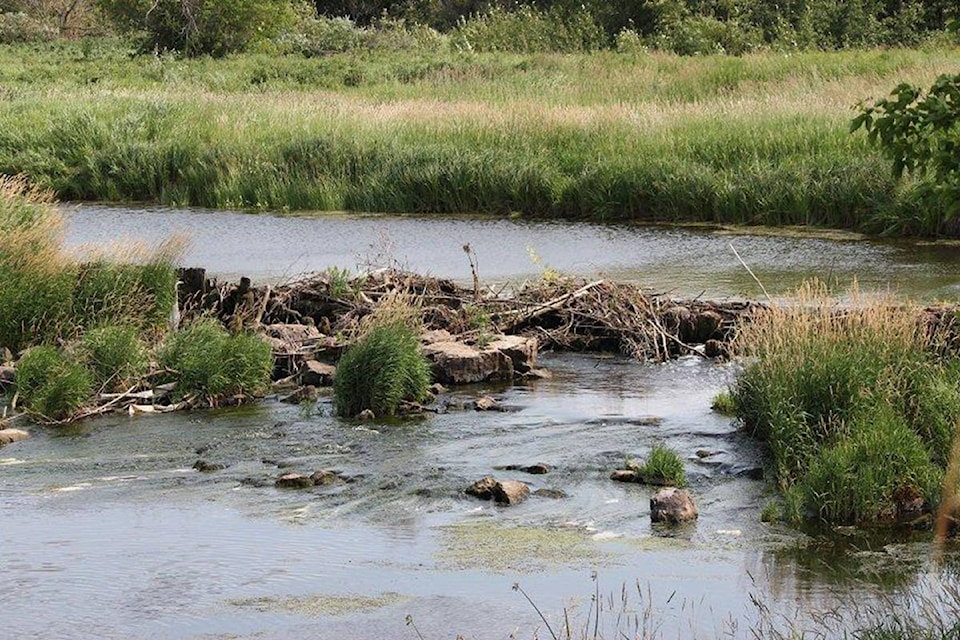The colourful and exciting history of Ponoka and surrounding districts began way back in the 1870s at the Battle River Crossing (now Highway 2A south bridge), which at that time was a vital supply point along the first rugged wagon trail between Edmonton and Calgary. After 1891 when the Edmonton/Calgary railway line came through the tiny Village of Ponoka, N.W.T., a large working station building was constructed and initially called Siding 14.
A steady stream of settlers from Canada, the American northwest, and Europe then came into this area to establish their new homesteads, to clear and seed the lush agricultural land, and to slowly establish their livelihoods and raise their traditionally large families.
This humble settlement next to the railway line and the surrounding rural districts grew at a rapid pace, and in 1904 Ponoka was officially declared as a town and became a vital service centre to the entire area. From the very beginning the strong agricultural roots of both the Town and County of Ponoka, the powerful presence of the Provincial Mental Hospital, an ongoing post-war prosperity, and the keen spirits and determination of a growing influx of new citizens, businesses, employment opportunities and professionals would combine together in the vast expanse of a rural and urban setting to become a highly successful and family friendly community that over the years has grown to be one of the most vibrant towns in Central Alberta, as well as a great place to live and thrive long into the future.
The Ponoka Main Street project
Throughout the early years of the growth and development of the Ponoka area many colourful tales are told in our history books of the tremendous challenges and hardships that faced the rapidly growing population, but through their sheer hard work, determination, and amazing efforts to achieve their goals together they would survive and thrive to achieve countless successes and lay the foundations for the wonderful community that we enjoy today.
In order to honour, maintain, preserve, and restore the diverse legacy of architectural and historical places of interest that were created by our early pioneers in and around the Town of Ponoka the council of the day entered into an enthusiastic Main Street Project in the summer of 2000 with the direction of the Alberta Historical Foundation.
With the skilled leadership of of Fraser Shaw, town council and staff, and a host of community volunteers, they would work countless hours together to identify 53 of our precious 20th century community landmarks. As a member of town council at that time I was so pleased to be able to assist everyone involved in the enthusiastic project to collect treasured photos, historical information, and memorabilia of our past, as well as to invasion areas of Chipman Avenue, Donald Avenue, and Railway Street and all around town transformed to their original splendour.
Along with the amazing restorations to some of the original signage and building structures, there was also the placement of unique permanent information plaques on these historical buildings and sights to honour their owners and staff as well as to appreciate forever the vital contributions that so many have made over the years to the early development, growth, progress, and successes of our great community.
The historical buildings and sights recognized in the 2000 Main Street Project were: Siding 14, The Railway Depot, C.P.R. Dam, Grain elevators, Ponoka Plaza, Royal Hotel, Bank of Commerce, Thomson’s Grocery, Lux and Stephen’s Garage, Capital Theatre, Allan’s Furniture, Jack’s Men’s Wear, Brody’s, The Ladies’ Wear Shop, Ponoka Radio Electric, F.E. Algar Building, Ponoka Meat Market, Imperial Bank, Robert’s Implement Dealership, Maple Leaf Garage, Ponoka Herald, Community Rest Room, Cold Storage Service, Medical Arts Building, Chipman Avenue, Bird Drug Company, Leland Hotel, Green’s Gents Furnishers, Thirsk’s 5 cents to a $1.00 Store, Club Cafe, Bill’s Billiard Hall, Sweet Block, Cash Foods, Ranks Drug Store, Alberta Treasury Branch, old Town Hall, old County Office, Field’s Motors, Baptist Church, Bowker Funeral Home, Ponoka Provincial Building, Ponoka Jubilee Library, Central Alberta Dairy Pool, old General Hospital, the Brekke House, the Red Brick School, Riverside Store, Vold-Jones and Vold Auction, Fort Ostell, The Alberta Hospital, the Calgary/Edmonton Trail, as well as a spectacular 1956 Aerial photograph of the ongoing progress of ‘our Ponoka’ and surrounding districts. Of course as we browse around town we will realize that many of these colourful and cherished early Ponoka landmarks are now gone forever or sadly failed the test of time while others have changed names, purpose, and owners, but hopefully they will never be forgotten, and will always be remembered for their dedicated efforts, both in the past and on into our present era.
Our present Downtown Action Plan project
I congratulate the Town of Ponoka council and staff for their present project and efforts towards revitalizing the downtown area to assure a vibrant community that will continue to be an ongoing source of pride and strong encouragement for increased growth and activity long in the future.
For more information on this vital promotion please contact Tim Schmidt, Director of Planning and Development, Town of Ponoka at 403-783-4431 or at info@DowntownPonoka.ca.
